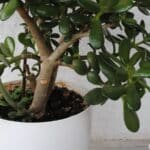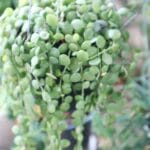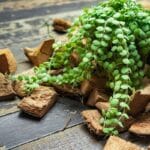Succulents have become a popular way to spruce up our homes. With their easy-going nature and adorable, thick fleshy leaves, not to mention the many varieties available out there, these plants have attracted many expert gardeners and plant enthusiasts alike.
- Are Succulents Poisonous to Cats and Dogs?
- #1. Aloe (Aloe vera)
- #2. Jade Plants (Crassula ovata)
- #3. Silver Dollar Jade Plants (Crassula argentea)
- #4. Bear’s Claw (Cotyledon tomentosa)
- #5. Pig’s Ear (Cotyledon orbiculata)
- #6. String of Pearls (Curio rowleyanus)
- #7. Blue Chalksticks (Curio repens)
- #8. Pencil Cactus (Euphorbia tirucalli)
- #9. Crown of Thorns (Euphorbia milii)
- #10. Mother of Millions (Bryophyllum daigremontianum)
- #11. Chandelier Plant (Bryophyllum delagoense)
- #12. Flapjack (Kalanchoe thyrsiflora)
- #13. Panda Plant (Kalanchoe tomentosa)
- Other Succulents Toxic to Pets
Starting a succulent collection can be quite daunting. There are lots of factors that you have to consider and most of them concern the requirements of the succulents such as light and water.
For some of us who have pets in our homes, it gets a lot harder because we also have to consider the safety of the furry members of our family. Despite their adorable appearance, there are succulents that can be toxic to pets.
While our pets have developed an instinctive knowledge to avoid these succulents, some of them, especially cats and dogs which are known to be quite inquisitive, could get in all kinds of trouble and mess with these toxic plants. This can be a problem for some who are new to the world of collecting succulents.
Are succulents poisonous to cats and dogs? If you are starting a succulent collection and are uncertain about which succulents are safe for your fur babies, you don’t have to worry because we have compiled some of the common types of succulents that are toxic to pets. See our list below.
Are Succulents Poisonous to Cats and Dogs?
So are succulents poisonous to cats and dogs?
The reality is that there are succulents poisonous to cats and dogs – some toxic succulents are incredibly dangerous – along with some that are potentially toxic and some that are not toxic plants at all.
Below is a guide to all the succulents poisonous to pets so you can keep these plants out of your home – and your furry friends safe and sound.
#1. Aloe (Aloe vera)

With their fleshy, lance-shaped leaves, aloe vera plants have become a staple plant for many succulent collections. While the aloe vera gel is considered edible and has potential medicinal properties, they can be poisonous to cats and dogs, and even horses. These aloe vera plants contain saponins and anthraquinones which can cause vomiting, lethargy, and diarrhea when ingested.
#2. Jade Plants (Crassula ovata)
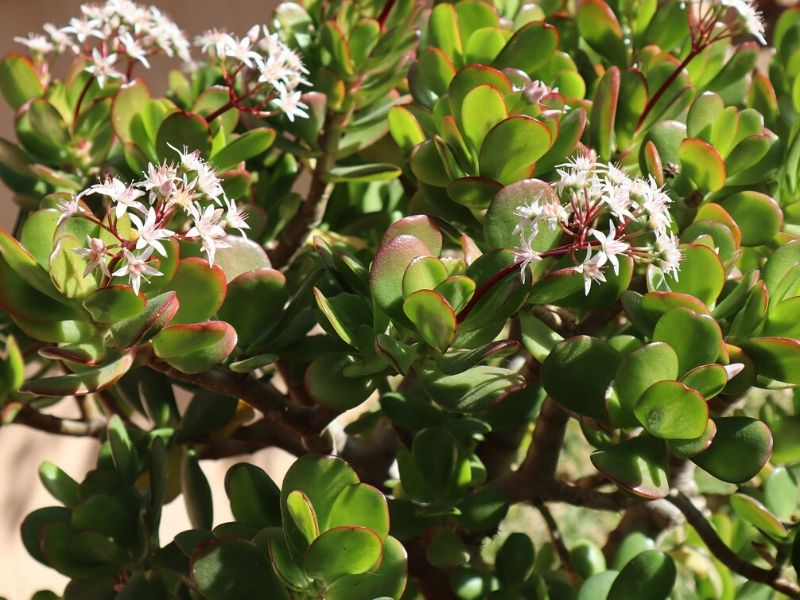
Many members of the genus Crassula such as the classic jade plant pose a toxic threat to our pets.
These Crassula ovata plants have an undiscovered toxic principle that can poison cats and dogs when ingested. The clinical signs of jade plant poisoning include vomiting, depression, and ataxia (1).
#3. Silver Dollar Jade Plants (Crassula argentea)
Another staple and a favorite because of their attractive foliage, silver dollar jade plants can also cause poisoning when eaten by our pets. The toxic principles of these plants are yet to be discovered but reports of poisoning include clinical signs such as vomiting, drunkenness, and, in extreme cases, tremors (1).
#4. Bear’s Claw (Cotyledon tomentosa)
This succulent is admired for its fleshy leaves that resemble a miniature bear paw. And to add to its adorableness is the velvety covering of the leaves. But these pretty leaves contain toxic bufadienolides which can cause vomiting, depression, ataxia, and various cardiovascular problems (1).
#5. Pig’s Ear (Cotyledon orbiculata)
Yet another plant resembling an animal, or at least a part of it, pig’s ears are popular for their velvety oval-shaped leaves with red margins.
These highly drought-tolerant succulent does not come without danger because they also contain toxic substances called bufadienolides that can cause vomiting, depression, and various cardiovascular problems when ingested.
Most reported cases of poisoning concern livestock and horses, but dogs and cats are also susceptible, so it is best to steer away from them if you have canine and feline members in your house (1).
#6. String of Pearls (Curio rowleyanus)
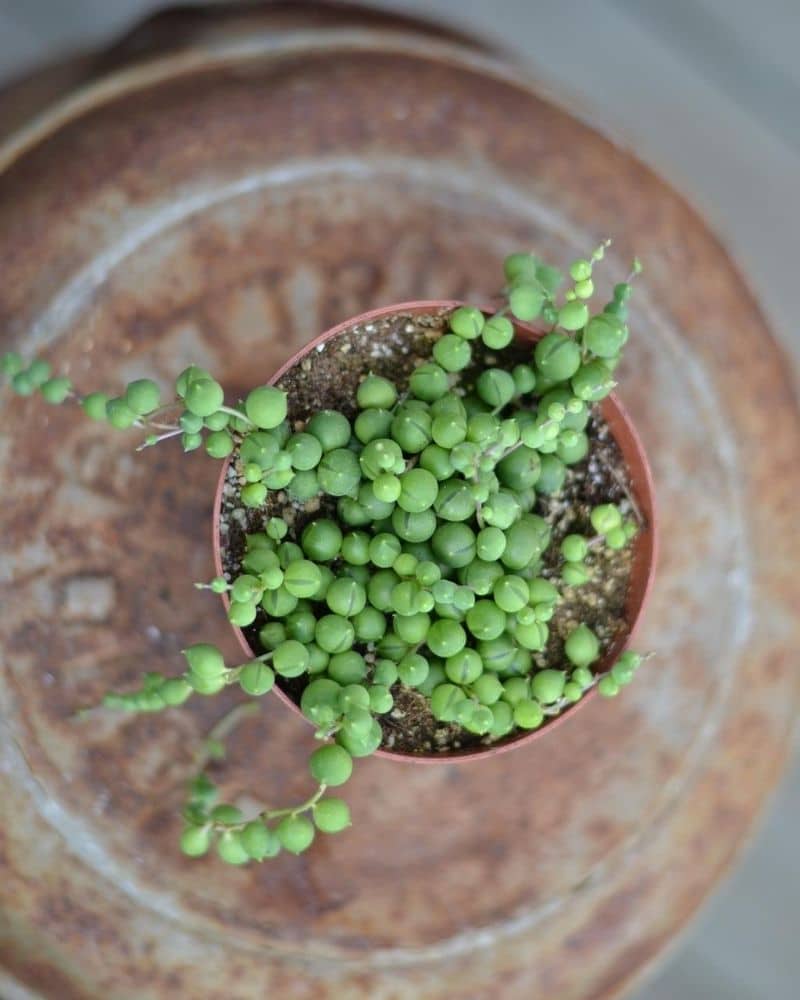
String of pearls is one of the most sought-after trailing succulents because of their fleshy leaves borne on long trailing stems. But despite its cascading beauty, these plants are toxic to your pets.
String of pearls has fleshy pearl-shaped leaves that contain toxic substances that can cause vomiting, diarrhea, drooling, skin irritation, and lethargy (1).
#7. Blue Chalksticks (Curio repens)
Another popular Curio variety you might want to steer from is the blue chalksticks. This adorable variety features fleshy cylindrical leaves that grow from a small, erect stem. But like the string of pearls, these popular succulents are also toxic to your pets.
#8. Pencil Cactus (Euphorbia tirucalli)
Despite its name, pencil cactus is not actually a cactus. It belongs to the Euphorbia genus which means it is succulent. This rather big succulent features fleshy, cylindrical stems that grow in a roundabout manner.
The pencil cactus contains a milky white sap that is toxic to cats, dogs, horses, and humans too. When ingested, the sap of these common succulents irritates the mouth and stomach which causes vomiting. It could also irritate the skin upon contact (2).
#9. Crown of Thorns (Euphorbia milii)
Crown of thorns is unmistakable with their sharp, pointed thorns, and striking, beautiful blooms. Although the thorns can appear to be deterring for our pets, there is no guarantee that our furry critters will not mess with these plants.
And not only can the prickly thorns of this plant cause trouble for them but the milky white sap it contains in its fleshy stems can irritate the skin, and mouth, and stomach when ingested (1,2). These succulents toxic to pets simply aren’t worth having around when there are other common succulent perennials to choose from!
#10. Mother of Millions (Bryophyllum daigremontianum)
This plant features large, green leaves that bear numerous plantlets along the margin. The plantlets can readily grow into a new plant once it falls off the leaf. Although it is often treated as an invasive species because of its prolific propagation and hardiness, this plant is still one of the famous kalanchoe plants.
Aside from its invasive tendency, there is another downside to these plants – at least for pet parents.
Keep them away from your pets because they contain toxins called bufadienolides which causes various cardiac problems when ingested. Signs of poisoning include nausea, vomiting, diarrhea, oral pain, and heart problems (1, 2).
#11. Chandelier Plant (Bryophyllum delagoense)
Otherwise known as Devil’s Backbone, this beautiful succulent from Madagascar features a single erect stem with long tuberous white-spotted leaves growing along its length. The plant is famous for its blooms which resemble a chandelier.
Despite its striking appearance, the plant is treated as a noxious weed because of its toxicity, so better to keep it away from your pets. Clinical signs of poisoning from these succulents toxic to pets include vomiting, diarrhea, and, in rare cases, abnormal heart rhythms.
#12. Flapjack (Kalanchoe thyrsiflora)
This stunning kalanchoe variety features paddle-shaped green leaves that take on a bright red-orange hue during winter. But this exceptional beauty is also exceptionally poisonous to cats and dogs.
Clinical signs of poisoning for these succulents toxic to cats and dogs include vomiting, diarrhea, and abnormal heart rhythms (1).
#13. Panda Plant (Kalanchoe tomentosa)
Panda plants are one of the most forgiving plants out there, but are succulents toxic to pets.
Characterized by green leaves with white hair and dark red spots on their margins, they are easy to grow and can thrive even when neglected for a few days. But it being a kalanchoe species, all parts of the panda plant are presumed to be toxic to both pets and humans. They can cause nausea, drooling, vomiting, dilated pupils, tremors, and various heart problems (3).
Other Succulents Toxic to Pets
Unfortunately, this list of succulents toxic to pets isn’t completely exhaustive. There are other succulent plants to watch out for.
Some succulents poisonous to cats and dogs include the snake plant, the Chinese money plant, the mother-in-law plant, the Christmas cactus, the zebra plant, and the ghost plant.
Fortunately, there are plenty of other non toxic succulents for pet parents to grow. If you have a curious cat or dog and you’re worried about them eating plants that might be toxic, choose some of these other plants instead.
References
Reference List:
(1) Knight A. “A Guide to Poisonous House and Garden Plants”. CRC Press. 2007. P 89.
(2) Nelson L.S., Shih R.D. Balick M.J. “Handbook of Poisonous and Injurious Plants”. Springer Science & Multimedia Business. 2007. P 137.
(3) Deardoff D., Wadsworth K. “What’s Wrong With My Houseplant?: Save Your Indoor Plants With 100% Organic Solutions“. Timber Press. 2016. PP.232
Close
Image by jcsmilly/depositphotos




